Braille symbols are formed within units of space known as braille cells. A full braille cell consists of six raised dots arranged in two parallel rows each having three dots. The dot positions are identified by numbers from one through six. Sixty-four combinations are possible using one or more of these six dots. A single cell can be used to represent an alphabet letter, number, punctuation mark, or even a whole word.
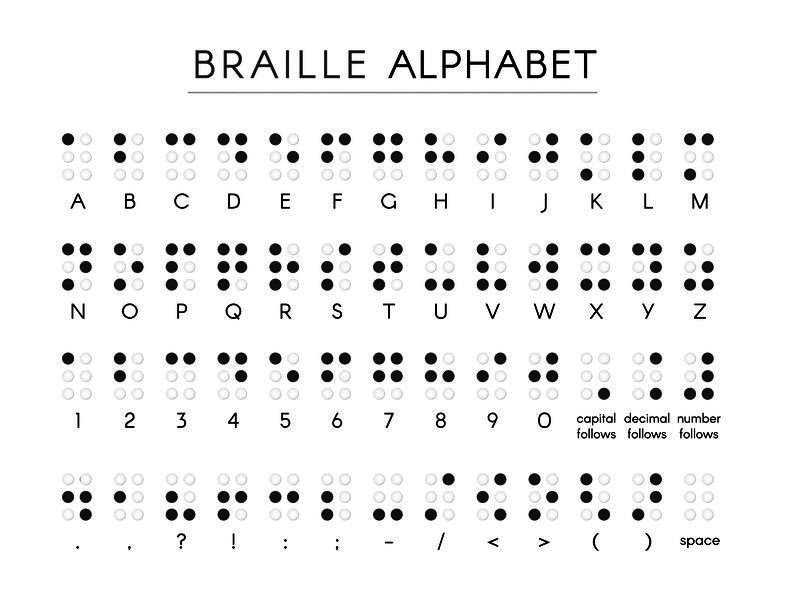 The alphabet, numbers, and punctuation in Braille.
The alphabet, numbers, and punctuation in Braille.
Louis Braille was born in Coupvray, France, on January 4, 1809. He attended the National Institute for Blind Youth in Paris, France, as a student. While attending the Institute, Braille yearned for more books to read. He experimented with ways to make an alphabet that was easy to read with the fingertips. The writing system he invented, at age fifteen, evolved from the tactile “Ecriture Nocturne” (night writing) code invented by Charles Barbier for sending military messages that could be read on the battlefield at night, without light.
When every letter of every word is expressed in braille, it is referred to as Grade 1 braille. Very few books or other reading material are transcribed in Grade 1 braille. However, many newly blinded adults find this useful for labeling personal or kitchen items.
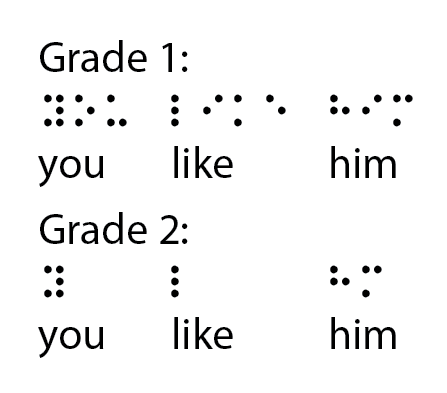
The system used for reproducing most textbooks and publications is known as Grade 2 braille. In this system cells are used individually or in combination with others to form a variety of contractions or whole words. For example, in Grade 1 braille the phrase you like him requires twelve cell spaces.
If written in Grade 2 braille, this same phrase would take only six cell spaces to write. This is because the letters y and l are also used for the whole words you and like respectively. Likewise, the word him is formed by combining the letters h and m.
There are 189 different letter contractions and 76 short-form words used in Grade 2 braille. These “short cuts” are used to reduce the volume of paper needed for reproducing books in braille and to make the reading process easier.
Grade 1 (or uncontracted) braille has nothing to do with first grade. Most children learn grade 2 (contracted) braille from kindergarten on. In recent years, some teachers have chosen to begin teaching grade 1 braille first, transitioning to grade 2 braille by the mid-elementary years. There is currently no research that supports the superiority of one approach over the other.
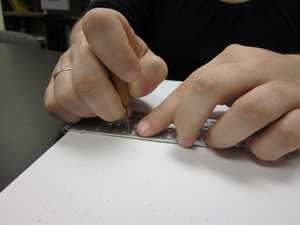 Slate and Stylus
Slate and Stylus
Just as printed matter can be produced with a paper and pencil, typewriter, or printer, braille can also be written in several ways. The braille equivalent of paper and pencil is the slate and stylus. This consists of a slate or template with evenly spaced depressions for the dots of braille cells, and a stylus for creating the individual braille dots. With paper placed in the slate, tactile dots are made by pushing the pointed end of the stylus into the paper over the depressions. The paper bulges on its reverse side forming “dots.” Because of their portability, the slate and stylus are especially helpful for taking notes during lectures and for labeling such things as file folders
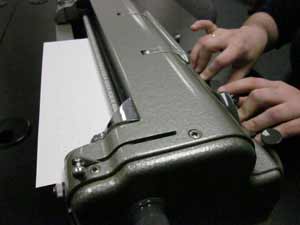 A Perkins Brailler
A Perkins Brailler
Braille is also produced by a machine known as a braillewriter. Unlike a typewriter which has more than fifty keys, the braillewriter has only six keys and a space bar. These keys are numbered to correspond with the six dots of a braille cell. In that most braille symbols contain more than a single dot, all or any of the braillewriter keys can be pushed at the same time.
Technological developments in the computer industry have provided and continue to expand additional avenues of literacy for braille users. Software programs and portable electronic braille notetakers allow users to save and edit their writing, have it displayed back to them either verbally or tactually, and produce a hard copy via a desktop computer-driven braille embosser.
Since its development in France by Louis Braille in the latter part of the nineteenth century, braille has become not only an effective means of communication, but also a proven avenue for achieving and enhancing literacy for people who are blind or have significant vision loss.
Knowing Braille is extremely important to people who are blind in spite of the note taking and print reading technologies that are available. There is a strong correlation between Braille and employment.
Return to the Braille Program page.
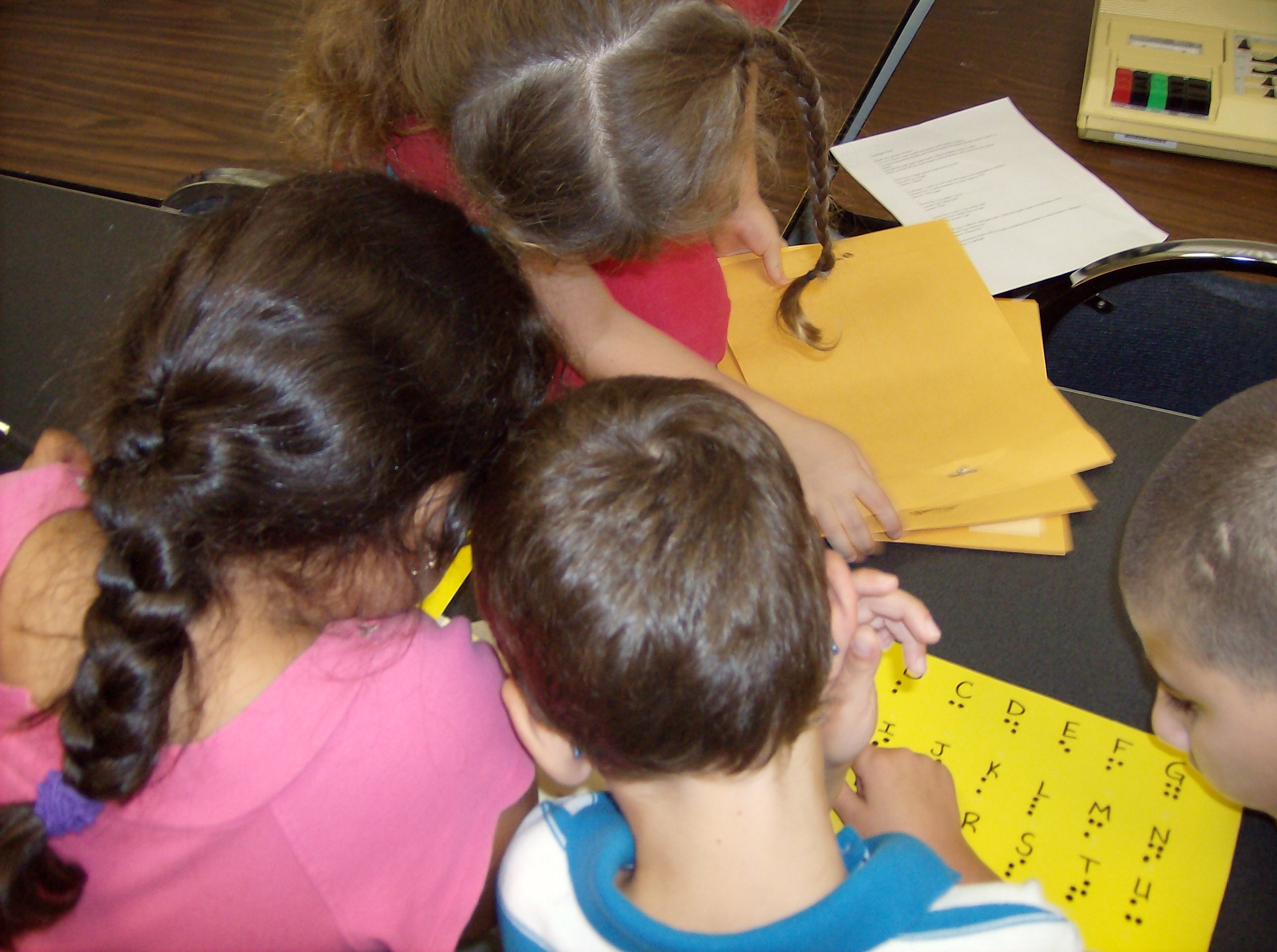 Children learning braille at kids camp.
Children learning braille at kids camp.